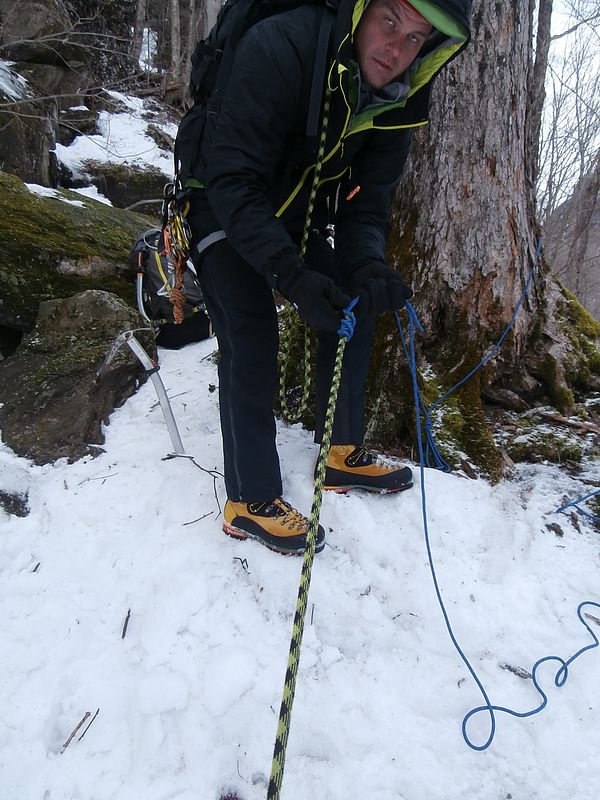Check out these photos and captions at THIS LINK for some great pointers/refreshers on crevasse rescue.
Met up with Brian Mohr on Thursday for a Crevasse Rescue Clinic. He’s currently on a “Tour De Ice Fests,” coming from the ADK and en route to Mt. Washington Valley. His timing for the Clinic couldn’t have been more perfect, with Thursday being a mega-meltdown (though the ice is rebounding quickly!). We photo-documented the stages along the way; and though these pictures/captions don’t capture all the detail necessary for completely understanding how to enact a rescue in a multitude of scenarios, they do capture some good fundamental steps. For those interested in greater rope rescue skills, we’ll be offering a Rope Rescue Clinic April 13-14!
EQUIPMENT CONSIDERATIONS:
A good crevasse rescue kit has everything you might conceivably need and nothing you won’t need. In alpine climbing, excess gear means excess weight, means excess wasted energy, means the potential to not reach your objective. So while it might be nice to have pulleys, traction devices, etc, etc, etc, all of those items are specialized devices that (should) almost never be put into use–if you’re often using your crevasse rescue gear, you need a refresher in crevasse awareness! Each person’s crevasse kit will vary based on techniques and personal preferences developed over time. And please remember that tools are only useful if you know how to use them and know their limitations and characteristics.
That said, here is my general kit:
1) 1 Guide ATC/Plaquette: Integral as a brake in pull systems and useful in ascending at times.
2) 1-2 Tiblocs: Useful as “tractors” in pull systems and for ascending.
3) 2 friction loops (aka “prussik loops”–though I prefer kleimheists generally)
4) 1-2 double-length runners: Useful for chest harnesses and general use.
5) 2-3 cordelettes: One for the anchor, one for munter-mule, ascending, and other applications, and perhaps another for problem-solving.
6) 5-6 locking carabiners (key lock highly recommended)
7) 6-7 non-locking carabiners

